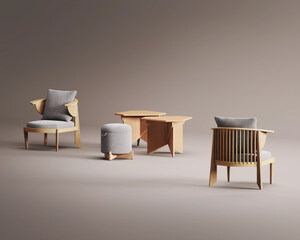Seeking Mindfulness: Steelcase Study Reveals How to Help Employees Find Focus at Work
New research shows 41 percent of workers report not being able to concentrate easily, while the average person loses 86 minutes per day due to distractions
GRAND RAPIDS, Mich., April 17, 2014 /PRNewswire/ -- Steelcase today released findings from its workplace research on how the physical environment can support or hinder mindfulness, along with five other dimensions of wellbeing. The researchers found that the physical environment offers behavioral cues, that can promote -- or hinder -- employee's physical, cognitive and emotional states and long-term health.
To view the multimedia assets associated with this release, please click: http://www.multivu.com/mnr/7088951-steelcase-study-employee-focus-wellbeing-mindfulness-research
A recent 14-country Steelcase/Ipsos study conducted as part of its wellbeing research revealed the growing lack of mindfulness in the workplace. Only 59 percent of employees reported their environment enabled them to feel relaxed and calm, while only 58 percent reported being able to work in teams without being interrupted or disturbed. Nearly half of all workers surveyed reported not having adequate spaces that support mindfulness and focus. Ongoing Steelcase research also found that workers in North America lose 86 minutes per day due to a variety of distractions in the workplace.
"Mindfulness means balancing the intense pace of life with being fully present in the moment," said Donna Flynn, director of Workspaces Futures at Steelcase. "With the proliferation of technology and growth of distributed work across time and space, workers are facing unprecedented distractions combined with pressures to be always on, leaving them stressed, tired, and overwhelmed. Healthy and mindful employees are a competitive advantage in today's business world, but to achieve it workers need supportive environments that give them the emotional capacity to interpret and experience events in a way that leads to productive, positive actions."
The Steelcase researchers identified and developed design concepts that companies can incorporate into their workplace to help encourage mindfulness by enhancing employees' ability to concentrate and make thoughtful choices amid distractions and disturbances.
Steelcase key ideas when designing for mindfulness include:
- Offer spaces where people can seek solitude and respite, or connect with others without distractions or interference.
- Design areas that allow workers to control the amount of sensory stimulation they are exposed to and enable them to amp it up or down.
- Create spaces that help people stay focused as they interact with others one-on-one and eye-to-eye.
- Offer places that are calming, through the materials, textures, colors, lighting and views.
"Given the mental fatigue that comes with high cognitive load, workers need physical spaces that help them manage the cognitive load and be fully present in the moment," says Beatriz Arantes, senior researcher and environmental psychologist with Steelcase Workspace Futures. "The space can give workers a reason to want to be present. When we ask people to envision a state of wellbeing, they talk about spas, vacation, yoga or other ways to escape from everyday life. Yet people spend 36 percent of their time working – more than any other activity. We want to help people reconnect with what makes their work fulfilling."
"To foster mindfulness, and wellbeing, organizations need to provide a diversity of work settings employees can choose from based on the work they have to do. When employees have choices, they have a sense of control that helps them feel more empowered and less stressed."
Six Dimensions of Wellbeing
Mindfulness is one of six key dimensions Steelcase researchers identified in their exploration of the physical, emotional and cognitive aspects of worker wellbeing. These six dimensions of wellbeing can be impacted by the design of the physical environment. The dimensions include:
- Mindfulness
- Optimism
- Vitality
- Belonging
- Authenticity
- Meaning
"Creative work is all about making connections, being open to new ideas, taking risks and experimenting. These behaviors are impossible in a stressed state of mind. For creative work to thrive, the workplace needs to be a supportive and positive environment," noted Flynn.
Read more about the other elements impacting wellbeing at work here.
About Steelcase Research:
The Steelcase research team conducts design research, based in the social sciences that includes observation and other anthropological methods. This study is a meta-analysis of 3 years of Steelcase global primary research combined with external studies.
The Steelcase/Ipsos survey was conducted online within the United States, Canada, Mexico, India, China United Kingdom, Belgium, Netherlands, France, Poland, Russia, Turkey and Germany by Ipsos on behalf of Steelcase from January and April 2014 among 10,527 adults ages 18 and older working for companies with more than 100 employees. Samples are representative of the employees population based on their age, gender and occupation. For complete survey methodology, including weighting variables, please contact Katie Hasse at [email protected].
To view the multimedia assets associated with this release, please click: http://www.multivu.com/mnr/7088951-steelcase-study-employee-focus-wellbeing-mindfulness-research
SOURCE Steelcase
WANT YOUR COMPANY'S NEWS FEATURED ON PRNEWSWIRE.COM?
Newsrooms &
Influencers
Digital Media
Outlets
Journalists
Opted In





Share this article